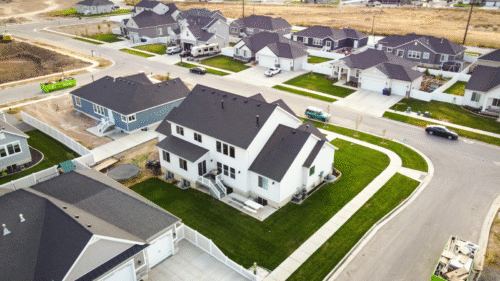Before any construction or demolition begins, one essential step often overlooked is the dilapidation survey. In New Zealand, these surveys are increasingly recognised as a vital tool to prevent disputes and manage risk during building or infrastructure projects. Whether you’re a developer, property owner, tenant, or contractor, understanding the role of a dilapidation survey can save you time, money, and legal complications.
What is a Dilapidation Report?
A dilapidation report is a professionally prepared document that records the condition of a building or structure before construction, excavation, or demolition begins in the vicinity. The process involves a detailed visual inspection, supported by photographs, diagrams, and notes, to document existing damage or wear. The survey provides a snapshot of the property’s condition at a given point in time.
If damage arises during or after the adjacent work, this report serves as key evidence to establish whether the condition has changed, helping all parties understand their responsibilities.
Why Are Dilapidation Surveys Important?
Dilapidation surveys are critical for construction projects where neighbouring properties could be affected by vibration, excavation, or movement. These surveys serve a protective function, helping all stakeholders:
- Avoid disputes and legal claims
- Understand the pre-existing condition of the surrounding environment
- Minimise reputational risk and delays
In essence, dilapidation surveys help to proactively manage the potential impacts of construction, shielding both property owners and project managers from blame for damage that may not have been caused by their activities.

What Does a Dilapidation Report Include?
A typical dilapidation report covers:
- Internal and external photographs
- Notes on existing cracks, movement, wear or deterioration
- Diagrams and floor plans indicating key findings
- Detailed observations by qualified building inspectors
These reports are non-invasive but thorough and focus on visually accessible parts of the property, such as walls, floors, ceilings, driveways, fences, retaining walls, and footpaths.
Types of Properties That Require Dilapidation Surveys
Commercial Properties
For commercial tenants and landlords, dilapidation surveys provide vital documentation to protect investments and reduce legal liability. They are often used during lease commencement or before nearby construction.
Residential Properties
In residential settings, particularly in shared complexes or adjacent housing developments, dilapidation surveys help prevent neighbour disputes and support a smooth building process.
Benefits of Dilapidation Surveys
Legal Protection
A professionally conducted survey provides independent documentation that can help resolve potential claims related to construction damage. It gives both property owners and tenants peace of mind.
Cost-Effective Preventive Measures
Identifying risks early can help prevent long-term damage and associated costs. Whether it’s minor cracking or structural vulnerabilities, early detection allows timely interventions.
How Often Should Dilapidation Surveys Be Conducted?
While there are no legal rules mandating frequency, it is recommended to conduct a dilapidation survey:
- Before starting construction, renovation, or demolition
- At the end of a project to compare against the initial condition
- Before new tenancies in commercial properties
How to Choose a Professional for Dilapidation Surveys
When selecting a building inspection provider for your dilapidation surveys, look for:
- Experience with commercial and residential buildings
- Detailed, easy-to-understand reporting formats
- Licensed and insured professionals
- Availability for both pre- and post-project inspections
Dilapidation Report Costs and Fees
The dilapidation report cost in New Zealand can vary based on:
- Size and type of the property
- Access challenges (e.g., multi-storey buildings)
- The extent of detail required
- Time spent compiling off-site reports
Commercial and complex reports can be more expensive. It’s best to contact your inspection provider for an accurate quote based on your specific needs.
Dilapidation Surveys vs. Condition Reports
Though often confused, dilapidation surveys and general condition reports are not the same.
- A condition report usually refers to the current state of a property, often for tenancy or real estate purposes.
- A dilapidation survey focuses on identifying pre-existing issues and comparing them before and after construction activity.
Which One Do You Need?
If you’re involved in construction or any project near other buildings, a dilapidation survey is the more appropriate and protective option.
Common Issues Found in Dilapidation Surveys
Dilapidation reports often reveal:
- Minor to moderate cracking in walls or pavements
- Movement in structural components
- Water ingress or drainage concerns
- Deterioration of retaining walls or driveways
These findings aren’t necessarily urgent but are crucial benchmarks for later comparison.
Why Choose Jim’s for Dilapidation Surveys?
Jim’s Building Inspections New Zealand offers:
- Qualified and experienced inspectors across major cities
- Fast turnaround times and thorough reporting
- Clear communication with all parties involved
- Independent assessments you can trust
We help builders, project managers, and property owners stay protected throughout the construction process.
Conclusion
Dilapidation surveys are more than a formal checklist – they are a safeguard for your reputation, finances, and peace of mind. Whether you’re planning a major build, renovating near shared boundaries, or managing a lease, a professional dilapidation report can prevent costly surprises later.
Reach out to Jim’s Building Inspections NZ today to arrange your survey and get tailored home inspection advice for your next project.
FAQs
Typically 1-3 hours on site, depending on the property size, with additional time for report preparation.
No, but they are highly recommended and often required by councils or insurers for major projects.
It should be performed by a qualified, independent inspector for credibility.
Yes, especially for commercial leases, to avoid end-of-tenancy disputes.
Reports are structured with images, commentary, and references to affected areas.
Yes, the findings can support fair negotiations over repairs and conditions.
While no universal standards exist, many councils and contracts recommend or request them.
In some cases, yes. It clearly defines what damage existed prior to your occupancy or work.
You may be liable for damage that you didn’t cause, due to a lack of baseline evidence.
Not typically, but check your policy or consult your broker.
When conducted by experienced professionals, they are a reliable tool for comparison.



